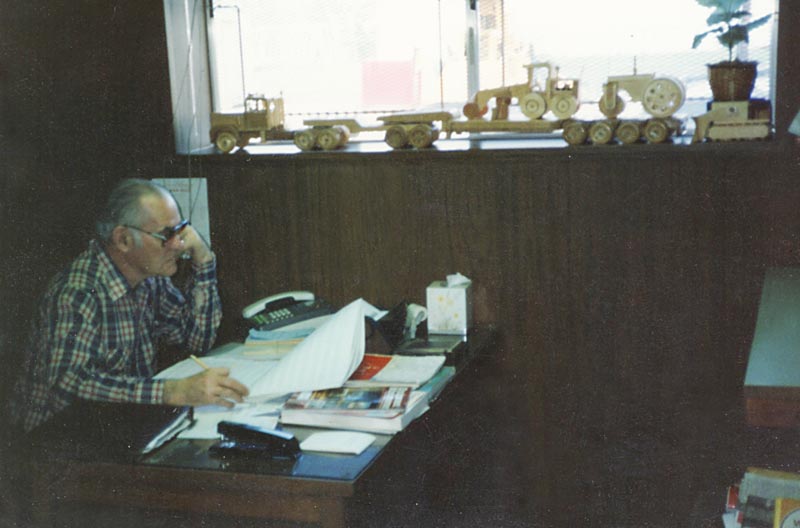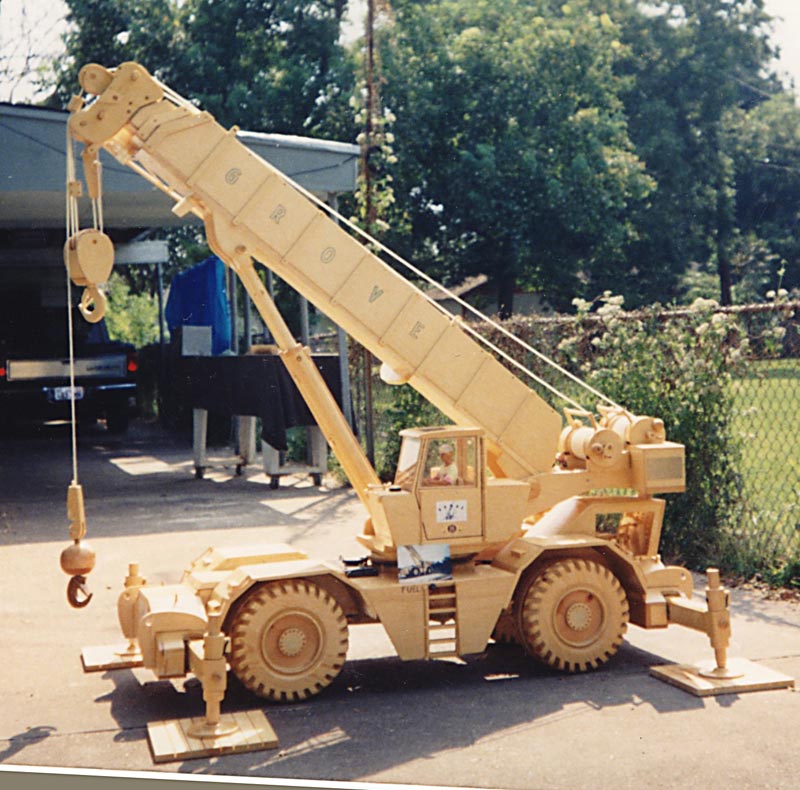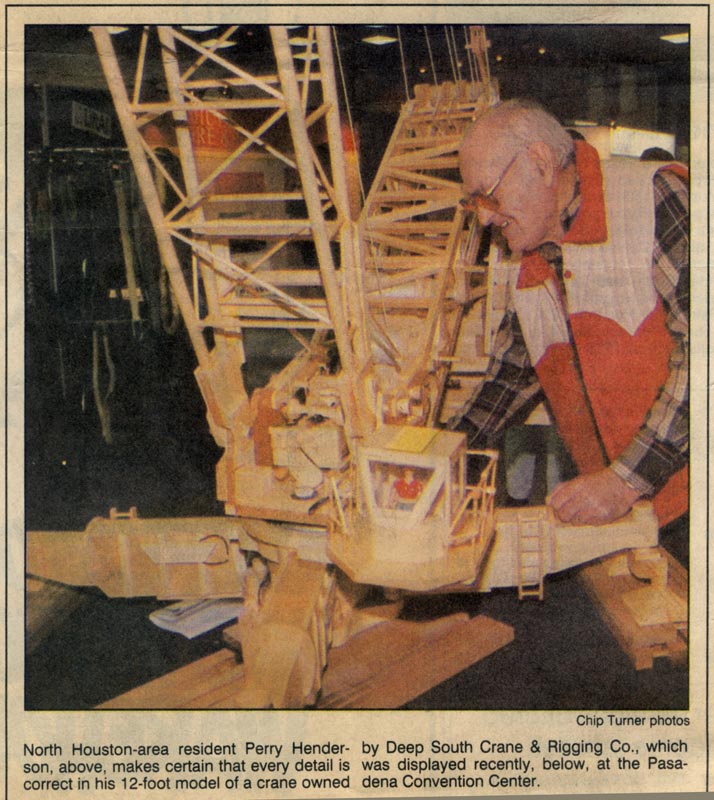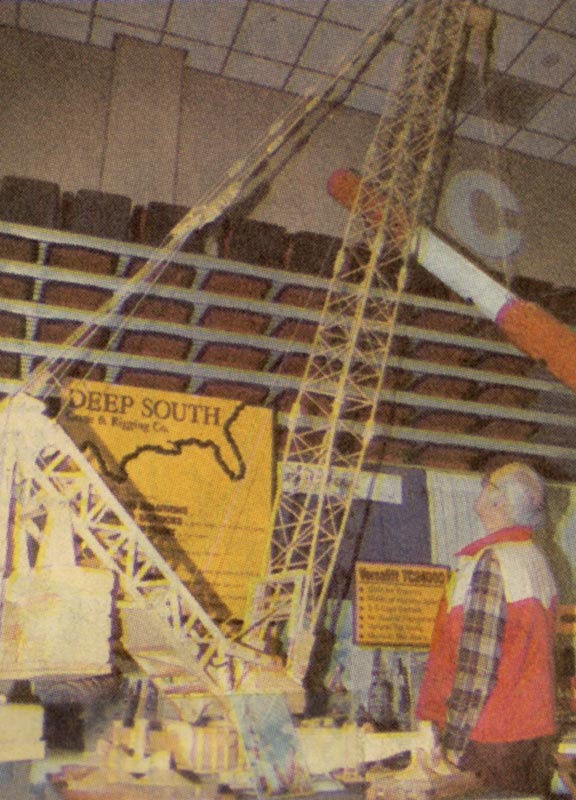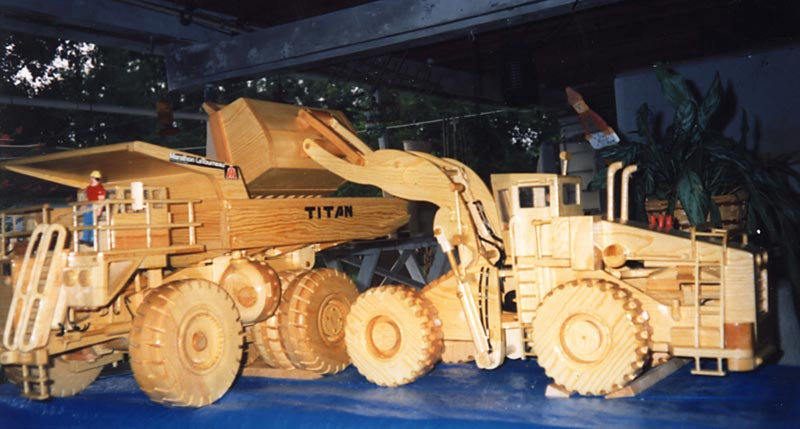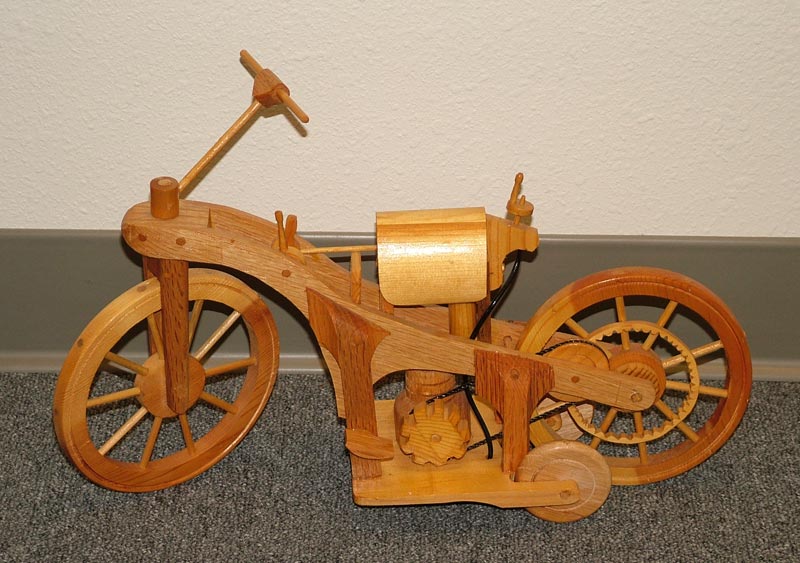November 2, 1927—May 12, 2007
Wooden Model Construction Equipment From Trucks to Giant Cranes
Perry Henderson at work in his old office at a heavy construction company. Some of his models can be seen on the cabinet in front of the window. (All photos courtesy of the Henderson family, unless otherwise indicated.)
Models Built for Fun, and for Business
When Perry Henderson passed away in 2007, he left behind a large collection of wooden models of construction equipment, spread around the world. Following his retirement from a heavy construction business in Houston, Texas, Perry spent many years building models for friends, for businesses, and for children through his church group.
Many of the models that Perry built for industry were used in company training programs. The models were often used to illustrate how a complicated piece of equipment was erected, adjusted and used in the field.
According to an article in a Houston newspaper, Perry stated, “I started out building model trucks, and then people wanted tractors, bulldozers, cranes and dump trucks.”
One of Perry’s largest projects, and the 45th different one he had built, was a model of a 12,000 ton crane owned by Deep South Crane & Rigging Co. The boom for the crane was 22 feet long, and the model was so tall that a portion of it had to be removed to get it into the Pasadena (Texas) Civic Center for a trade show. “It was twice as tall as my house when I set it up,” noted Perry.
Perry had been interested in building models since childhood, when he took woodworking classes in elementary and high school. He noted, “I was always, from the time I was a child, interested in woodworking. I’ve been building in my own shop for 45 years.” When he was actively building, Perry would make about five or six models a year, with each one taking about two months to complete.
Prolific craftsman Perry Henderson is seen with his model of the big Deep South crane on display in the Pasadena Civic Center, Texas. This was one of Perry’s larger projects for industry training purposes. These photos were taken from an article on Perry in a local North Houston newspaper. (Photos courtesy of Chip Turner.)
Making the Models
Now, Perry built his models in scales ranging from 1/18 to 1/6. Most of his models were built with top-grade white pine; however, other wood like oak or plywood was also used where extra strength was required. Some of Perry’s models also featured darker mahogany for a contrast of color. Aside from wood, the only other material that Perry incorporated into his models was the wire that he used to represent hydraulic lines.
The models were left unpainted (with a few small exceptions) because Perry believed that would take away from the natural beauty of the wood. “It takes from the value of the project when you paint it,” he noted. “It makes it look like a plastic model.”
According to Perry’s son, Phillip, his father would rarely have plans for any particular piece of equipment to work from. Instead, Perry would take a few photos, get some basic dimensions, and go from there. Because Perry worked in heavy construction, he understood the mechanics of these big cranes and vehicles. This enabled him to build models that were both visually accurate and functional.
Notably, Perry would spend up to $350 for wood on a large model. He remarked that, taking into consideration the cost of his time, he ended up making about $2.00 an hour for the pieces that he sold.
A LeTourneau L-1100 front-end loader scoops dirt into a giant Titan dump truck. The first photo shows the real thing, and the second shows two of Perry’s scale wooden models in the same pose. The model of the front-end loader is now on display in the Craftsmanship Museum.
Despite the fact that Perry sometimes sold models for prices ranging from several hundred to several thousand dollars, he never approached model building as a job. “It’s strictly a hobby,” remarked Perry.
Although it may have only been a hobby, Perry was a perfectionist. If a model or part didn’t meet his personally high standards, it would likely end up in the scrap heap. “I’ve cut them in two, or thrown them away, because I have seen a flaw that no one else can see,” said Perry. He also noted that he got a great feeling of accomplishment from building the models. Perry knew he had done a good job when someone at a trade show would identify one of his models by its manufacturer.
Perry also enjoyed the admiration he received, stating, “I get encouragement from my family and friends. Usually, when I finish a project I mail out about 40 pictures of it.” Three of Perry’s models are now on display at the Craftsmanship Museum in Carlsbad, CA. They were donated by Perry’s son, Phillip Henderson.
Information and quotes for this biography were obtained through an old Houston newspaper article by Mike Warren. The name of the publication and date of the article were not available. The photos from the newspaper article, which were used above, are courtesy of Chip Turner.
The three models pictured here are now on display in the Craftsmanship Museum for public enjoyment. Clockwise from top left, these models include: a LeTourneau L-1100 front-end loader, a cement truck, and a Daimler “Bonecrusher” motorcycle. They were graciously donated by Perry’s son, Phillip Henderson.
This scale wooden motorcycle is a Daimler “Bonecrusher.” The full-size motorcycle had a wooden frame, metal-banded wagon wheels, and no suspension—which made for a very rough ride (hence the name). The original was made by Gottlieb Daimler and Karl Benz in 1885, and is said to be the first motorcycle. (Note that the little outrigger wheels were actually part of the original design).
View more photos of Perry Henderson’s wooden scale model construction equipment.

